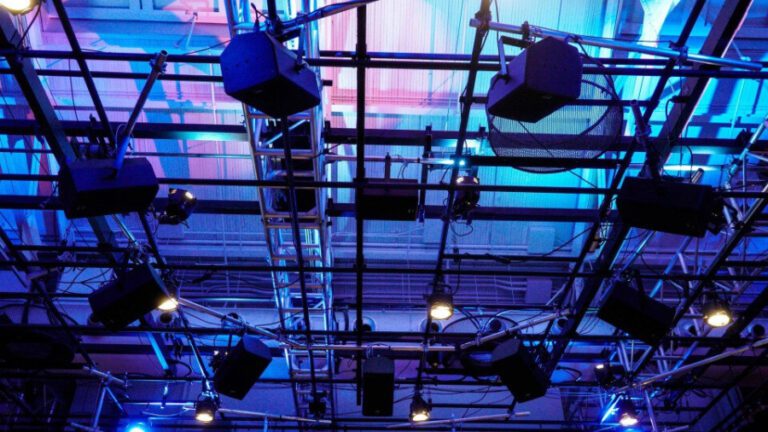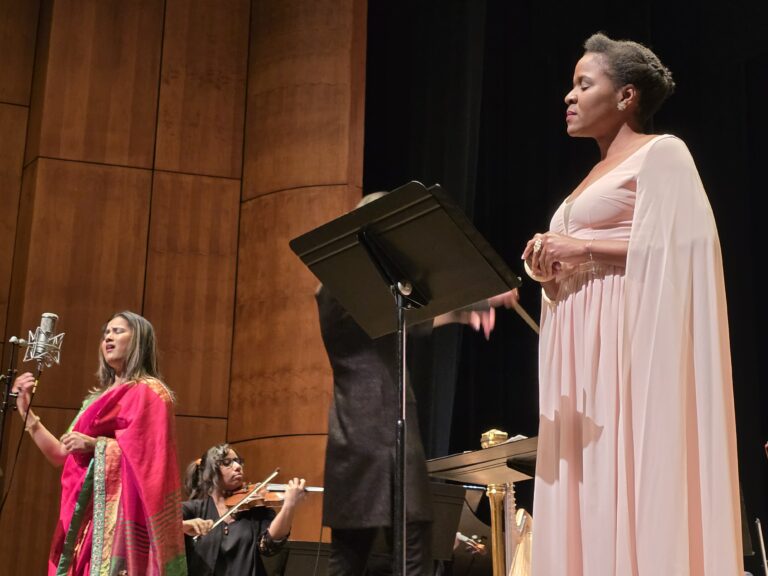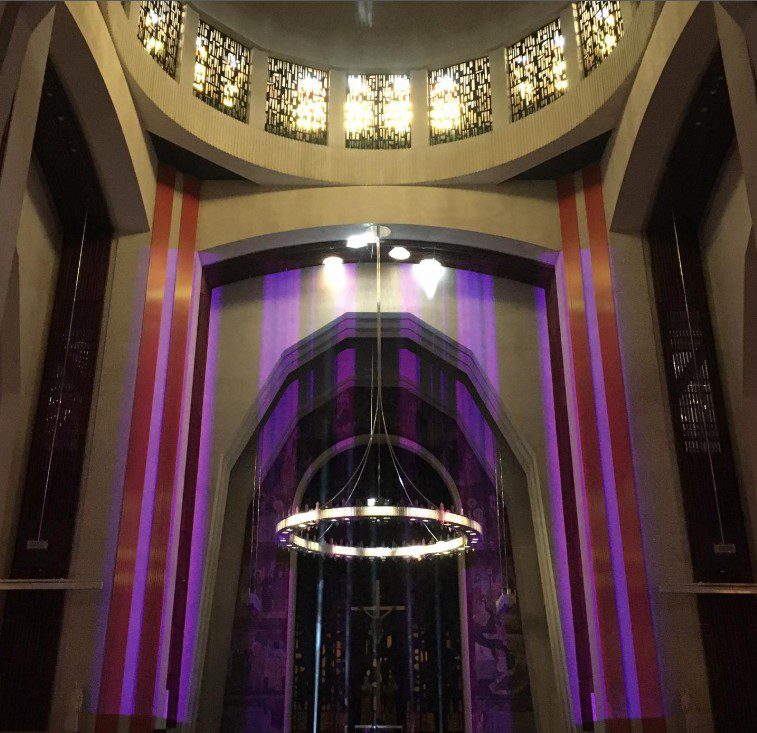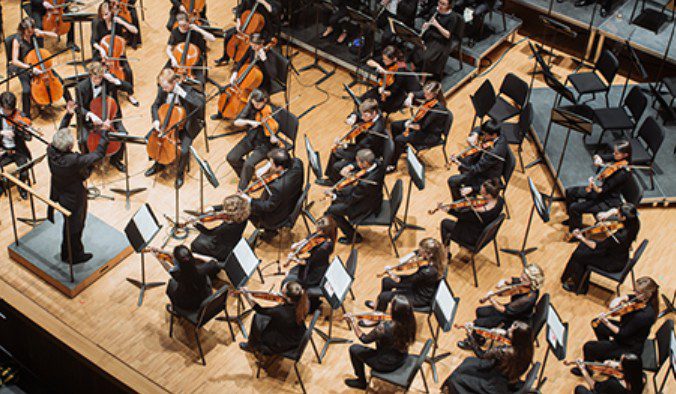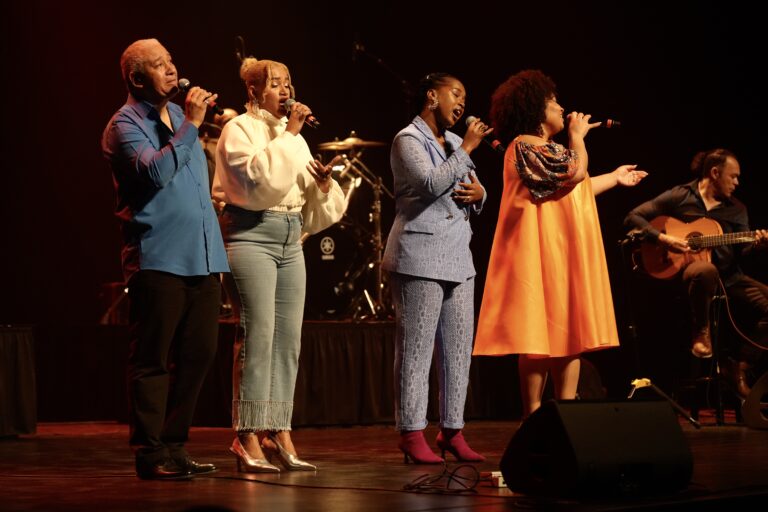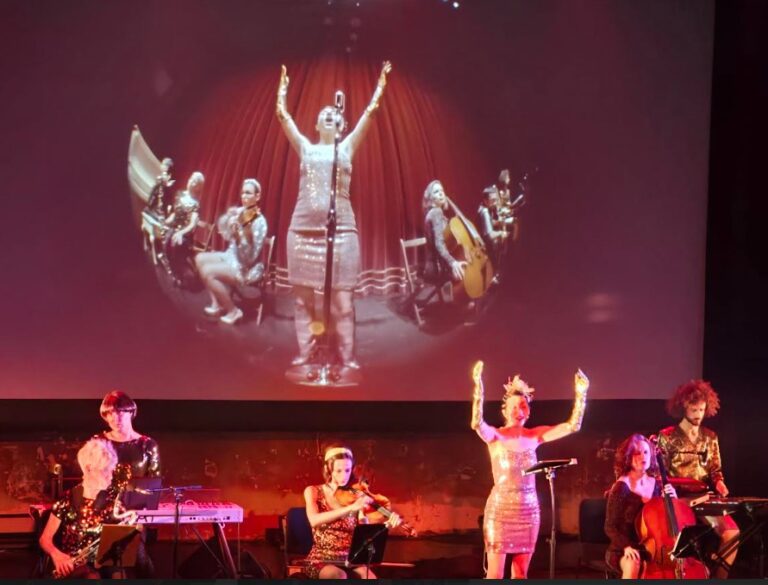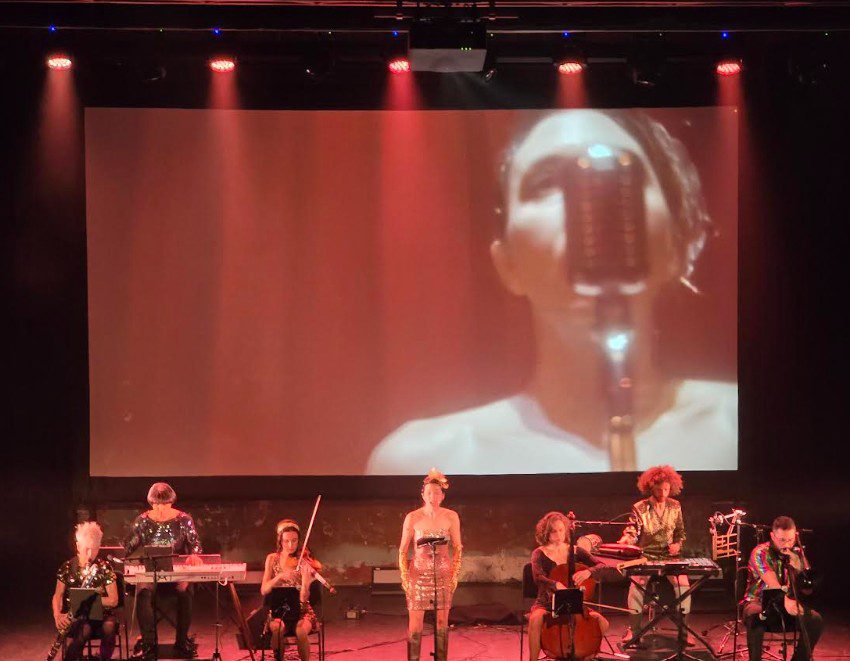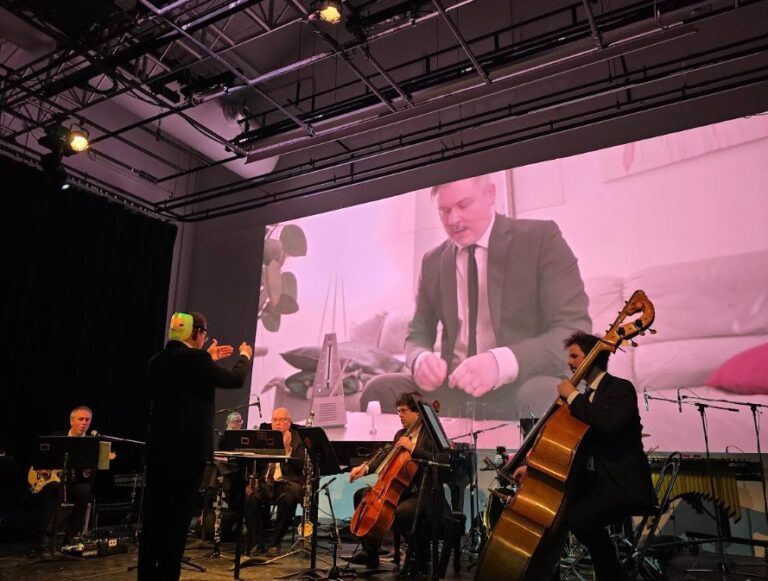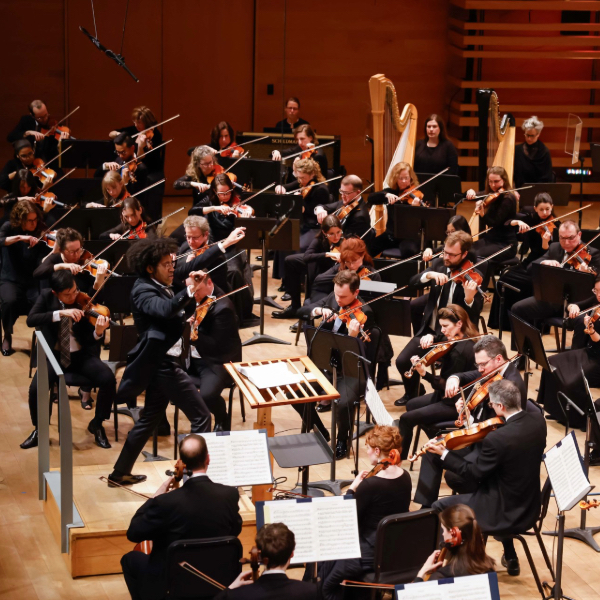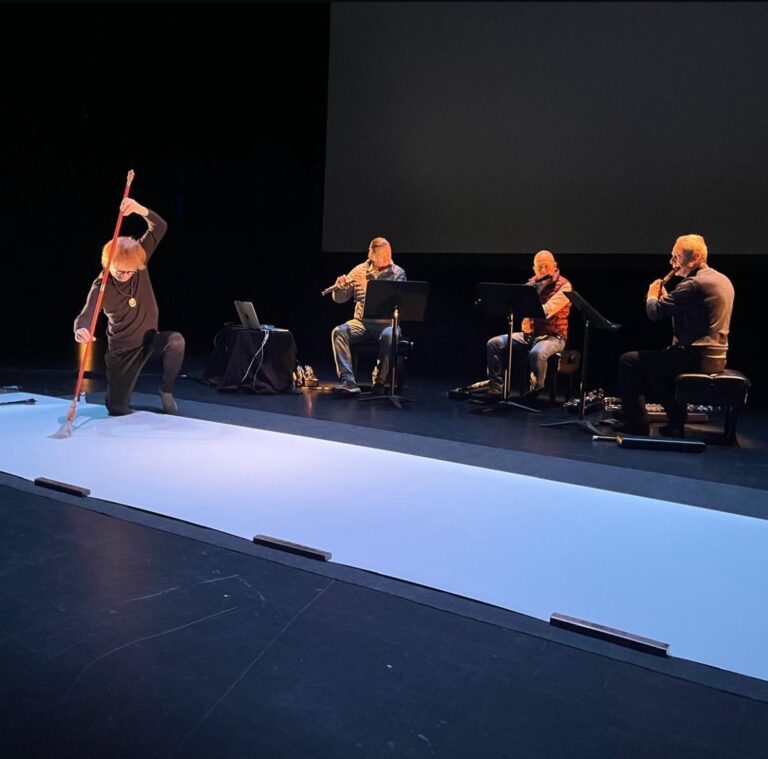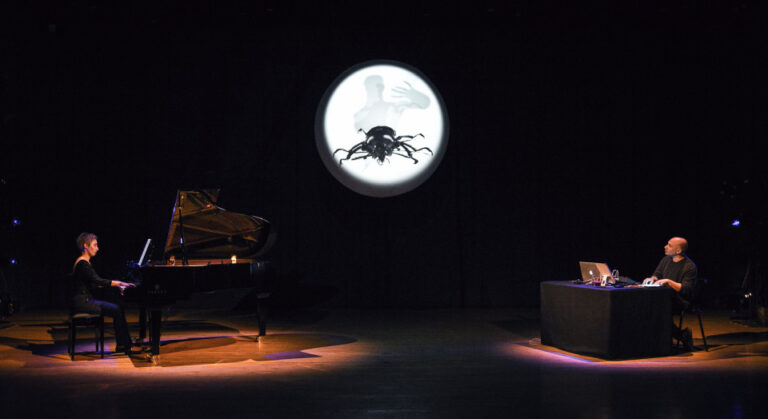Last Saturday evening, the city was swarming with bundled-up crowds, drawn by the bustling of the Nuit Blanche. Like a colony on the move, we threaded our way through the frenzied sounds of the DJ set on the Place des Festivals before branching off to the Agora Hydro-Québec, on the other side of Maisonneuve. There, in the semi-darkness, the public spiral into the heart of the dome of 32 loudspeakers to listen to the sounds and vibrations of the works in the great musical marathon that closes the two intense weeks of the 12th edition of Montreal/New Music.
Produced by the Groupe de Recherche-création sur la Médiatisation du Son (GRMS) in collaboration with Hexagram, this event promises to be a great immersive night.
In fact, this musical marathon must have given rise to a number of new acousmatic passions, as many first-timers, curious about the Nuit Blanche program, temporarily joined the initiates, letting themselves be carried away by the experience, before resuming their race through the Montreal night.
The program featured no fewer than 25 works, many of them premieres. The first sounds resounded around 7.30pm with Exercices in Estrangement (Vietnam Radio) by Sandeep Bhagwati, a work that explores the strangeness of the world through a series of poetic exercises. In this one, she questions how to live as an uprooted person.
A second block opens an hour later, featuring seven pieces by Austrian composers, most of whom were with us this evening.
Among the works presented, Brandung IV by Katharina Klement deploys continuous sound articulations, weaving together dense, sometimes granular sound materials, evoking the clashing and movement of liquids. In Martina Claussen’s Mosaic, we witness a sound construction in which realistic timbres are progressively sculpted into the material, and sound is continually constructed. With Inner outer self-variance and my deranged disembodied voices by Enrique Mendoza, the experience becomes more unsettling, with an immersion in the experience of auditory hallucinations, where we sometimes no longer know whether the sounds are coming from the work or from our seatmate, creating a certain sensory vertigo.
After a short break, the evening continues with a block of three works incorporating a visual dimension.
The first, Point Line Piano by Jarosław Kapusciński, projects onto a large screen the real-time vision of the virtual reality headset worn by the performer. In this digital space, he draws shapes that interact with sound. The repetitiveness of the performance and the constant return to empty tableaux make for a somewhat static experience. Moreover, the impact of the gestures on the music seemed to me rather unclear.
Next up is Fluyen by Valentina Plata, a contemplative work that contrasts man-made tunnels with Mexico’s natural underground water caves.
Finally, Third State by Mike Cassidy and Kristian North is the most compelling work. Like an oscilloscope, this piece for three lasers visualizes sounds. Timbres emerge through the complexity of luminous figures and the superimposition of colors, generating new sonorities.
Then, back to the acousmatic formation with a long block of nine works. The spatialization provided by Kasey Pocius was spot-on and impressive, complementing the dynamics and narrativities of the works. Among the works presented, Rodrigo Sigal’s Friction of Things in Other Places and Francisco Colasanto’s Mambo were particularly well suited to the listening context, with their borrowings from popular, folkloric sounds and Latin rhythms.
Around half-past midnight, I finally bid farewell. After more than four hours of acousmatic immersion, Montreal and its Nuit Blanche ants called me back.
The evening continued, with two more blocks to come. Five creations were programmed, but they will remain, for me, shrouded in mystery…
